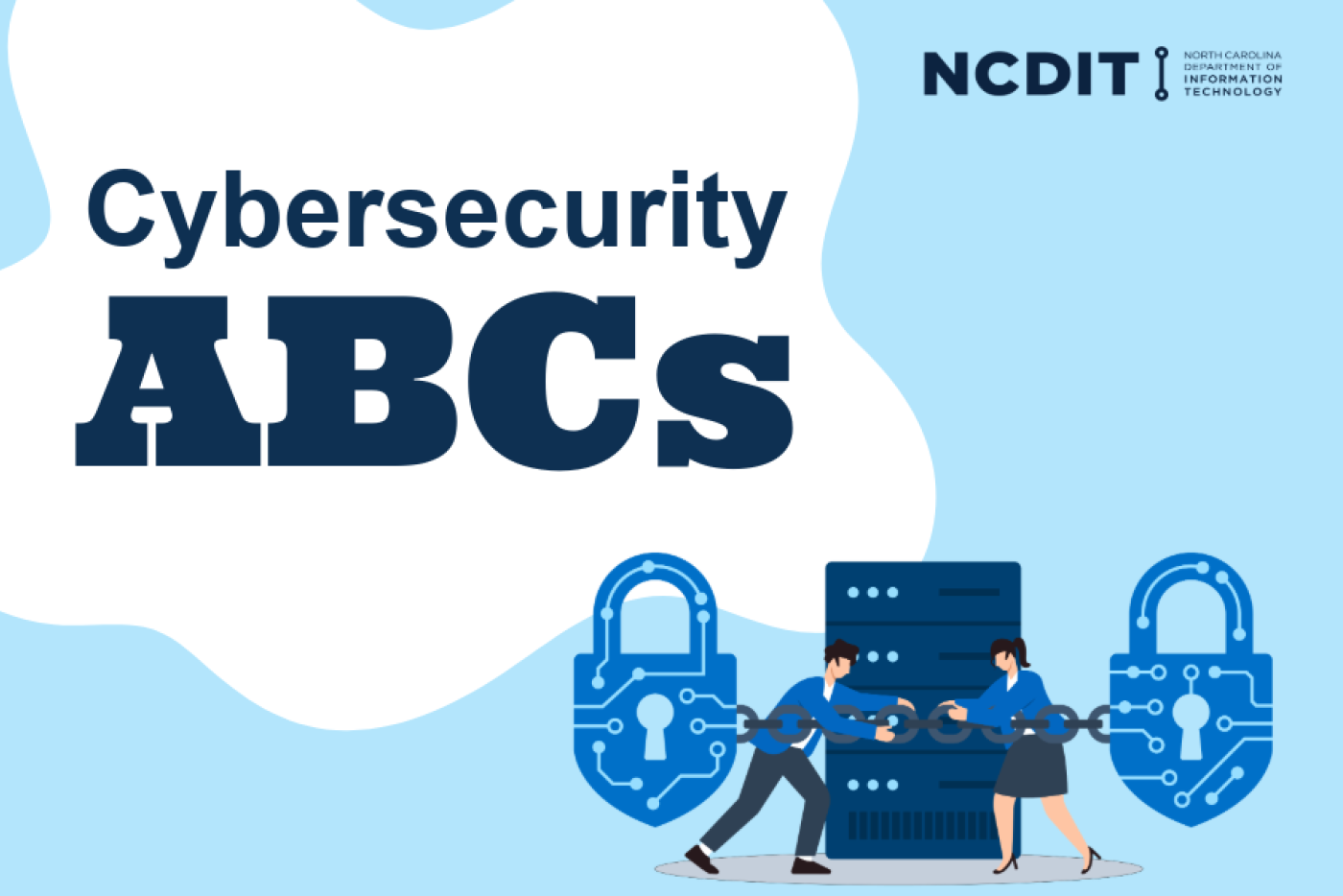Our ABCs break down key cybersecurity terms and offer tips for protecting your digital safety:
A – Authentication: Protect sensitive data with secure sign-ins.
B – Backup: Regularly backup your data.
C – Cloud Security: Monitor and limit access to trusted, authorized users only.
D – Digital Footprint: Think before you post and limit sharing personal information on public platforms.
E – Encryption: Encrypt sensitive data before storing or sharing it.
F – Firewall: Configure rules to allow only necessary traffic.
G – Geotagging: Turn off location sharing when not needed.
H – Hacker: Avoid clicking on suspicious links or attachments and never share passwords online.
I – Incident: Have an incident response plan ready in case of a data breach.
J – Jailbreaking: Removing restrictions from devices. Avoid doing this as it can create security risks.
K – Keys: Use strong, unique encryption keys and rotate them regularly to protect sensitive data.
L – Lockscreens: Always use a password-secured lockscreen on all devices.
M – Malware: Keep software updated, run antivirus scans, and avoid suspicious links or downloads.
N – Network: Ensure your Wi-Fi network is encrypted and password-protected to keep intruders out.
O – Operating System: Keep your operating system updated to patch security vulnerabilities.
P – Passwords: Use strong, unique passwords for every account.
Q – Query: Verify and validate all inputs to prevent SQL injection and other data attacks.
R – Report: Report phishing emails.
S – Scams: Be skeptical of unsolicited calls, emails, or messages.
T – Threats: Regularly identify and access potential risks to your system.
U – Updates: Enable automatic updates when possible.
V – VPN: Use a trusted VPN to encrypt your internet connection and protect your data on public networks.
W – Wi-Fi Security: Use unique passwords and limit access to trusted devices only.
X – XDR: Extended Detection and Response. Cybersecurity teams use XDR platforms to help reduce blind spots, catch cyber threats and enhanced incident prioritization.
Y – Your Software: Use and install only approved software that is known to be free of malware. Don't download or install apps from emails you aren't sure are legitimate and be cautious when installing software from website "ads" or sites identified from search engines.
Z – Zero Trust (ZT): Use the Zero Trust method to stay aware of any cyber threats, "never trust, always verify."

